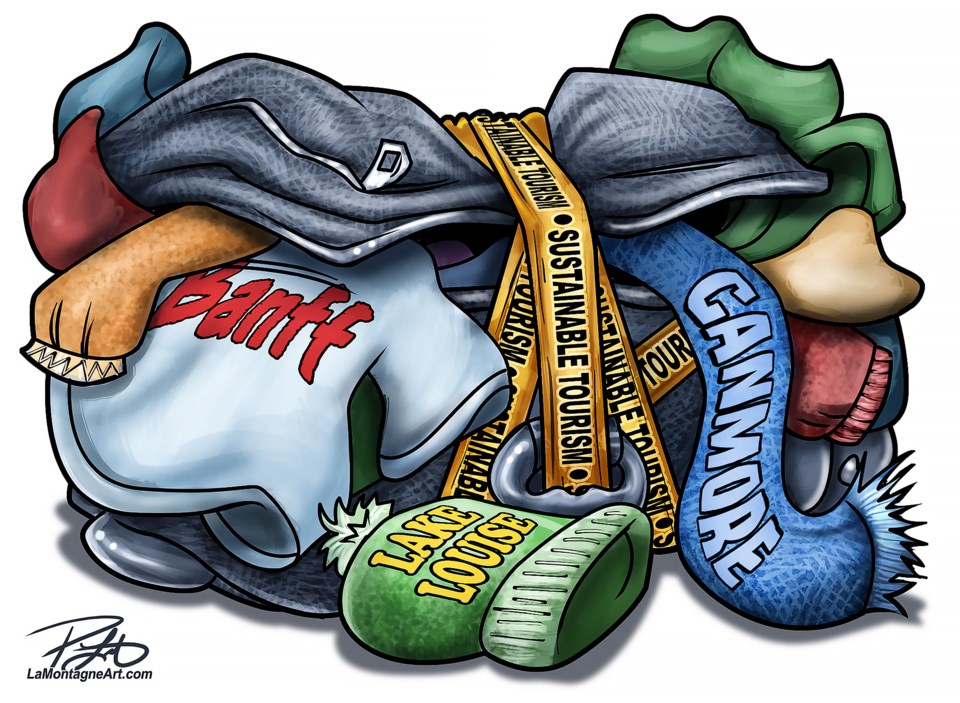The flood of tourists heading into or through the Bow Valley is a daily occurrence.
In the past, locals could look to shoulder seasons as a brief pause but each year brings shorter offers of respite.
For some residents, the sight of outsiders can bring on feelings of exasperation and anger, while others understand people will come to what is largely considered one of the most scenic and beautiful areas of Canada.
But how much is too much tourism?
It’s a question being grappled by area municipalities, the province and Parks Canada. All three levels of government face the question each day, but also look to solve how best to manage it.
In Canmore, a tourism task force looked at better understanding the history of tourism in the community and moving forward with more sustainable strategies for tourism.
Banff never stops discussing tourism, with many of its key policy decisions and guidance focused on tourism. Projects such as the Banff Avenue pedestrian zone, Bear Street renovation and renovating streets for active modes of transit are largely due to efforts of better managing tourism.
The two municipalities – along with Jasper – are combined in lobbying the province to achieve the long sought after resort municipality status. A report commissioned by the three communities outlined they generate $112 million in provincial taxes and contribute $2.3 billion to Alberta’s GDP.
Though absent from the push to lobby the province, Lake Louise and Kananaskis Country are facing equal pressure as the steady flow of visitors is showing no sign of reversing.
Of course, funding the necessary infrastructure to support a level of tourism well beyond each municipality’s population is largely done on the back of local taxpayers.
An area economy based on industry and stripping of natural resources has shifted to tourism and being reliant on visitation. The COVID-19 pandemic highlighted how a greater need for economic diversification is needed as opposed to just tourism, but no matter what some may think people are going to come to the valley.
The province has largely looked at the region as its gold mine and the cash cow that just keeps giving.
During the 2021 budget, the province established an ambitious Tourism Recovery Plan that looked to double tourism spending to more than $20 billion annually by 2030.
And sorry Bonnyville and Lac la Biche, but most of that travel will be coming to the mountains no matter how many big potatoes are unearthed.
Since becoming premier, Danielle Smith has been equally aggressive in pushing tourism as a key cog in the Alberta economy. Her mandate letter to the Forestry, Parks and Tourism ministry emphasizes the need to keep the tourism ATM pumping out cash.
With an upcoming provincial budget to be tabled Feb. 28, it’s expected more priority will be placed on the tourism sector.
At the federal level, Parks Canada has taken steps to look at ways of combating an explosion of visitors and personal vehicle traffic. In Banff National Park, traffic volume has exploded by about 50 per cent in the past decade and pushed over the four million mark each year.
Moraine Lake will be off-limits to the majority of personal vehicles, while both the Banff Management Plan and the Parks Canada expert advisory panel for moving people throughout the national park place a heavy emphasis on buses and limiting personal vehicles.
Coming out of the annual park planning forum, the Lake Minnewanka area will develop an area plan for the region that gets about one million visitors each year.
There’s no shortage of ideas or plans that have been instituted or are being worked on in response to tourism.
For all three levels, there’s no easy answer. No matter what any one of them does, people will continue to flock to the mountains.
Though each level of government will continue to hope for the golden answer to fall in their laps, the difficult work is collaborating and establishing frameworks that best put the area, its residents, wildlife and the environment first.
When any of the three are rowing in different directions, time in creating answers and solutions is ultimately put to the back burner.




